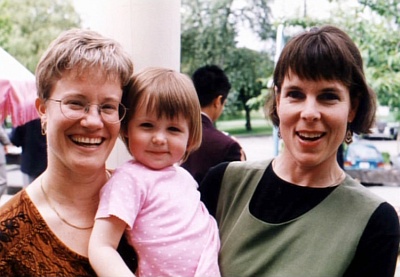Sticks and Stones
Words that hurt and how young people can overcome them
Film info
Title: Sticks and Stones
Running time: 17 min.
Director: Jean Padgett
Country of origin: Canada, 2001
Language: English spoken
Genre: Documentary/animation
Suggested age group: 8 - 10 years
Synopsis
Young children aged 5 to 12 describe how it feels to be teased when their families don't follow traditional gender roles, when they hear put-downs of themselves. They talk about why bullies indulge in name-calling, and what they think should be done about it. Some words are explained with the use of animation.
This short documentary film was made in Canada in 2001 for children, educators, teachers and parents. The title refers to the traditional English rhyme: “Sticks and stones/ May break my bones/ But words will never hurt me”, which could encourage victims of teasing to pretend nothing happened.
In the film young children ages 5 to 12 from elementary schools in Vancouver and Toronto describe how they feel when someone teases or attacks them or their families. The kids, coming from different family contexts, are interviewed during a school activity against discrimination, and they offer the viewers insights about bullying and non-acceptance of diversity, with particular reference to violations of traditional gender roles and homosexuality. They offer their opinion on how schools should deal with this issue, which does not mean pretending that nothing has happened.
Main themes
Same-sex parents
Bullying
Homophobia
Name calling
Family
Goals
Encouraging children to think about the diversity of ways in which to be male or female, about the different forms of love that can make a family, and about the importance of respecting each of them.
Setting the scene
First of all, create a respectful and inclusive environment:
- Pay attention to language: be careful to use inclusive language, not taking for granted that families should come in any particular form; use “parents” or better still ‘carers’ to include foster families instead of “mothers and fathers”; don’t assume certain activities to be masculine or feminine, whether referring to family roles or to jobs. Don’t imply, or use examples which might imply, that love is always male-female.
- Establish the rule of respect: Everybody must listen to others and show respect. As a teacher you may need to promptly respond, gently but firmly, when potentially discriminatory or offensive comments are made (“We don’t use that word because it is hurtful: how do you think it would make you feel?”) or when statements are based on stereotypes
“What you say can be true sometimes, but often it is not”, “Actually there is no rule for that: many families have a mum and a dad, but many others do not”, “It is not mandatory that boys love girls and the other way around”).
Activities
Activities before screening the video (about 1hour):
- Family picture: every pupil draws the house (or the houses, if they have parents who are separated) where they live and the people who live with and love them. (30 min)
- Sharing of the drawings with the class. Every pupil explains their drawing
to their classmates and tells them what in the picture makes their family
“special”. (30 min)
Activities while screening the video (about 2h):
- Have the class divide a sheet of paper into quarters, and let’s start! (5 min)
- Min. 1.43: Stop the film and ask the class what they perceive all the families to have in common, and what is that makes a family? (15 min)
- Min. 3.26 (after the pupils in the film talk about what “gay” means): Stop the film and ask the class to draw a picture showing how the kids in the video feel at this point in the first quarter of the sheet they prepared. (10 min)
- Min. 7.20 (after the pupils in the film explain the worst thing about name-calling): Stop the video and ask the class to draw a picture showing how the pupils in the film feel at this point in the second quarter. (10 min)
- Before starting the film again, ask the class why they think people sometimes call others names or tease them? How does being teased make people feel? What do they think about those who tease others? What do they think about those who are teased? What do they would do to help him or her?
Write all the answers on the board. (20 min) - Min. 8.35 – 9.39 in the film a cartoon explains the origin of the derogatory English word “faggot”: Are there any other insults that children in your class may have heard and used to tease each other? You may want to collect some information about their origin too. (10 min)
- Min. 10.43 (after the pupils in the film talk about their response to the traditional and the social prescriptions for boys and girls): Stop the film and ask the class to draw a picture showing how
the kids in the film feel at this point in the third quarter. (10 min) - Min. 11.10: Stop the film here and ask the class to do the same thing the kids in the film are doing. Write on the board everything they consider part of Male Culture, (that is to say what is considered to be necessary to fit in amongst boys and men) and everything they consider part of Female Culture (ie what is considered to be necessary to fit in amongst girls and women). (20 min)
- Min. 13.42: This can be the right moment to ask the class what do they think about what you have written on the board about Male Culture, Female Culture and Bullying (step “e”). Who agrees with the film? Why would some boys like to do something considered to be “girlish” and some girls like to do something considered “boyish”? (20 min)
- At the end of the screening, ask the class to draw in the fourth quarter of the sheet how they feel about the film they just saw. (15 min)
Activities after screening the video:
- Discussion with the class: What new words did you learn from the film? How many kinds of families are shown in the film? What would you do if someone in your class was teased?
- Take th e chant that the pupils sing in the film (“Sticks and stones/ May break my bones/ But words will never hurt me”). Discuss what it means, whether the words are true or not, and in what sense.
- Finally you could assign a composition to the class to let everyone develop his or her own ideas about the issue.





